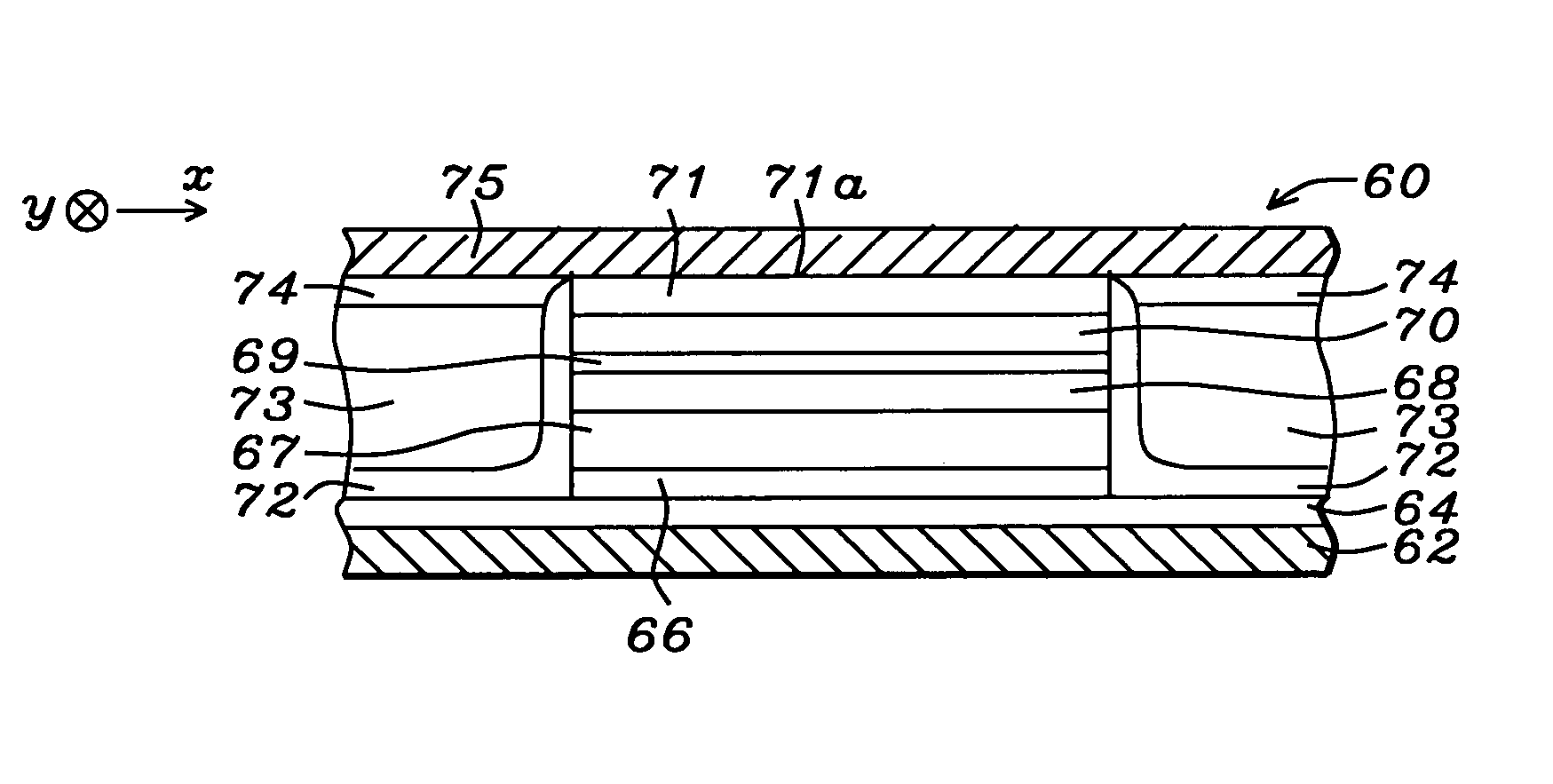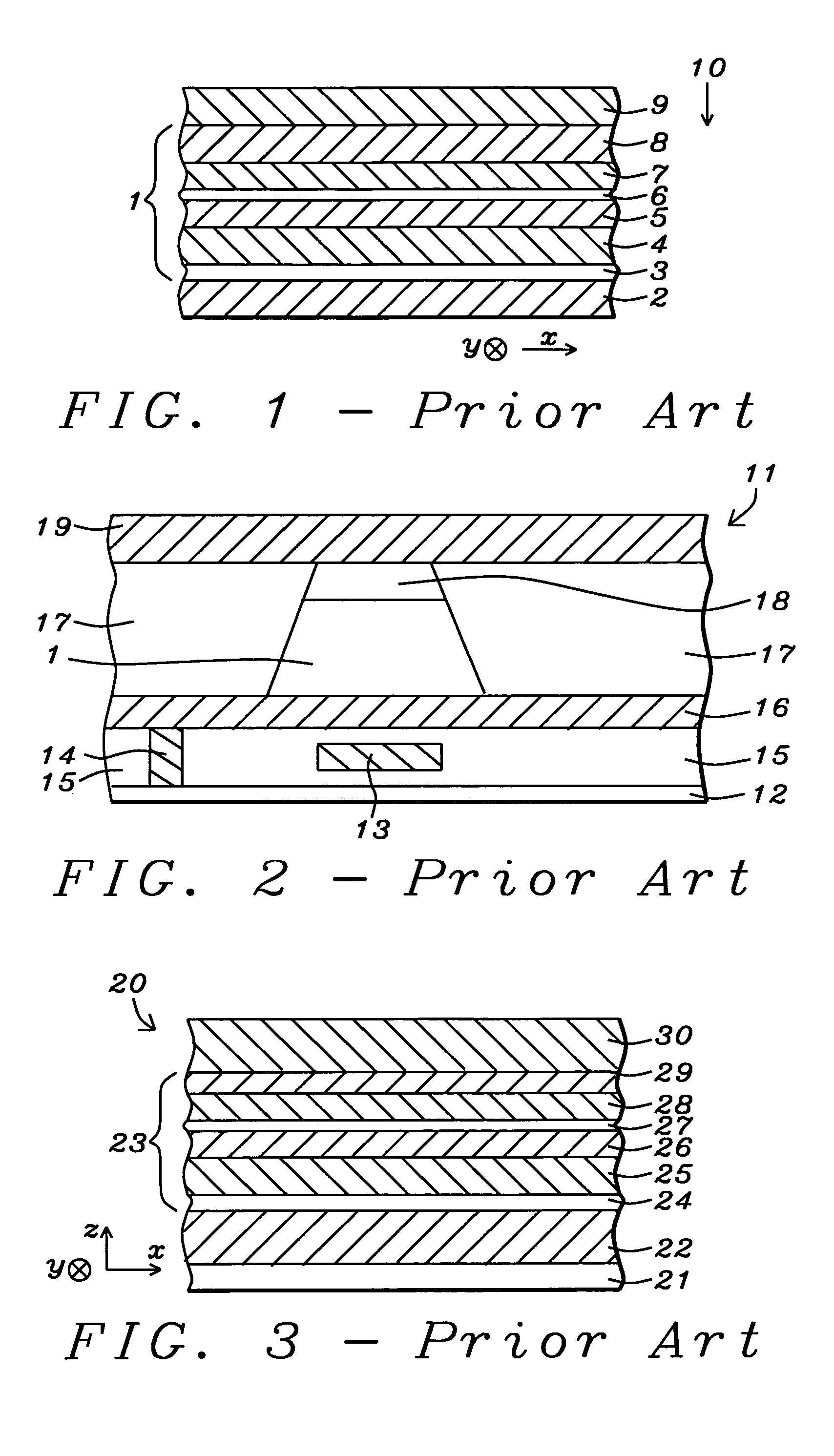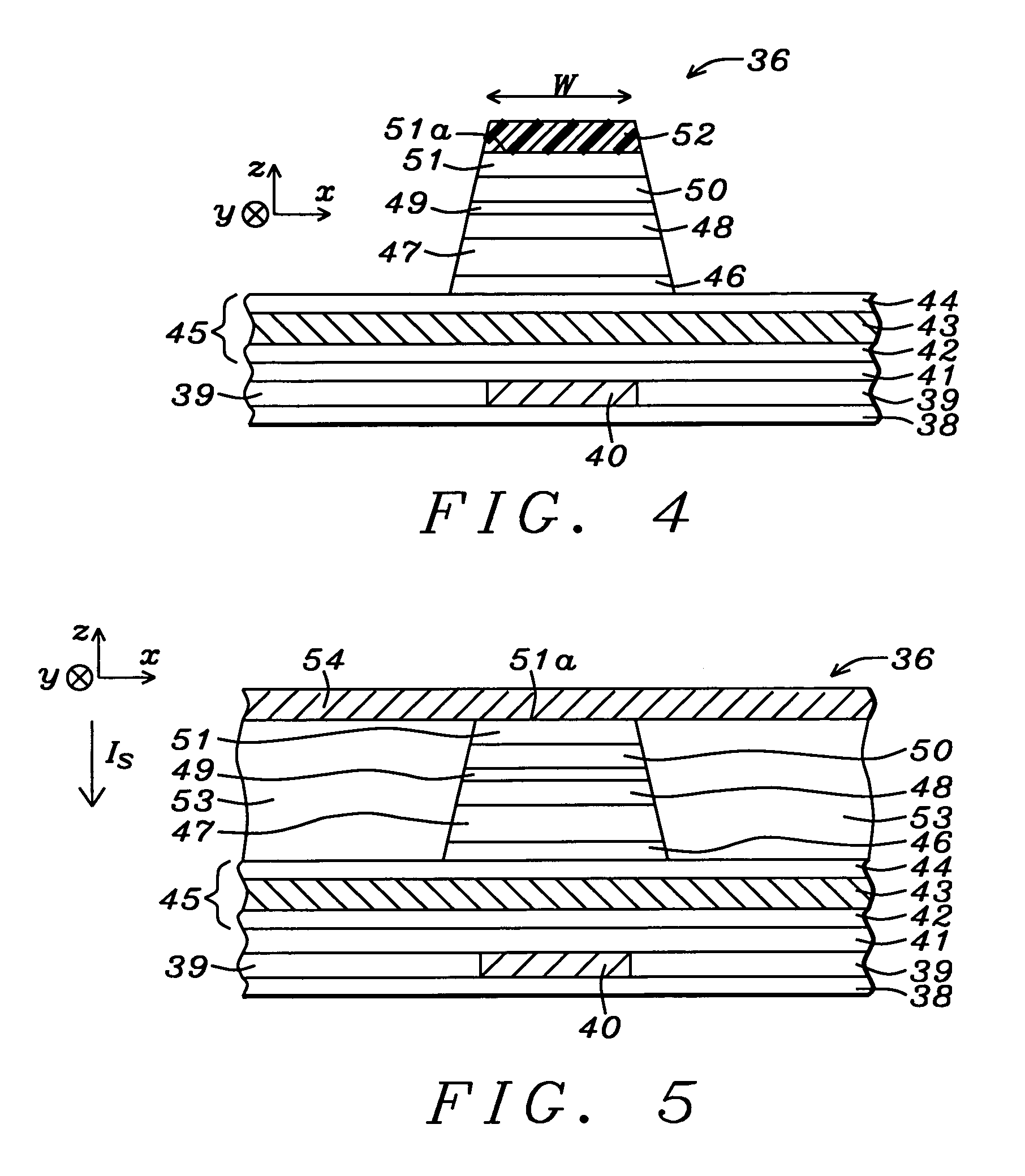Capping structure for enhancing dR/R of the MTJ device
a technology of enhancing dr/r and capping structure, which is applied in the field of capping layer, can solve the problem of not teaching hayashi, and achieve the effect of well controlled magnetization and switching characteristics
- Summary
- Abstract
- Description
- Claims
- Application Information
AI Technical Summary
Benefits of technology
Problems solved by technology
Method used
Image
Examples
first embodiment
[0028]An MRAM structure formed according to the present invention will now be described. Referring to FIG. 4, a partially completed MRAM structure 36 is shown that includes a substrate 38 which may be silicon or another semiconductor substrate used in the art that typically contains other devices such as transistors and diodes. A first insulation layer 39 comprised of Al2O3, silicon oxide, or the like is disposed on the substrate 38. There is a first conductive line comprised of copper, for example, formed within and coplanar with the first insulation layer 39. For the purpose of this discussion, the first conductive line is a word line 40 that is used to conduct current in a +y or −y direction. Optionally, the first conductive line may be called a digit line, data line, row line, or column line as appreciated by those skilled in the art. The word line 40 may be enclosed on the sides and bottom by a thin diffusion barrier layer (not shown). There is a second insulation layer 41 such...
second embodiment
[0055]In a second embodiment depicted in FIG. 7, a magnetoresistive (TMR) read head 60 is shown in which an MTJ element is formed between a bottom (S1) shield 62 and an upper (S2) shield 75. A composite capping layer is formed on a moderate spin polarization layer such as a NiFe(17.5%) free layer in the MTJ to enhance dR / R and provide acceptable magnetostriction.
[0056]A substrate 62 is provided that may be a bottom shield comprised of NiFe in the TMR read head 60 as is understood by those skilled in the art. A shield capping layer 64 is formed on the bottom shield 62 by a previously described method that involves sequentially depositing a Ta layer with a thickness of about 50 to 80 Angstroms and a Ru layer with a thickness of between 20 and 30 Angstroms on the bottom shield 62. Thereafter, the Ru layer is removed by a sputter etch process that also partially removes the underlying Ta layer to form an amorphous Ta layer as the shield capping layer 64. The shield capping layer 64 has ...
PUM
| Property | Measurement | Unit |
|---|---|---|
| thickness | aaaaa | aaaaa |
| thickness | aaaaa | aaaaa |
| thickness | aaaaa | aaaaa |
Abstract
Description
Claims
Application Information
 Login to View More
Login to View More - R&D
- Intellectual Property
- Life Sciences
- Materials
- Tech Scout
- Unparalleled Data Quality
- Higher Quality Content
- 60% Fewer Hallucinations
Browse by: Latest US Patents, China's latest patents, Technical Efficacy Thesaurus, Application Domain, Technology Topic, Popular Technical Reports.
© 2025 PatSnap. All rights reserved.Legal|Privacy policy|Modern Slavery Act Transparency Statement|Sitemap|About US| Contact US: help@patsnap.com



